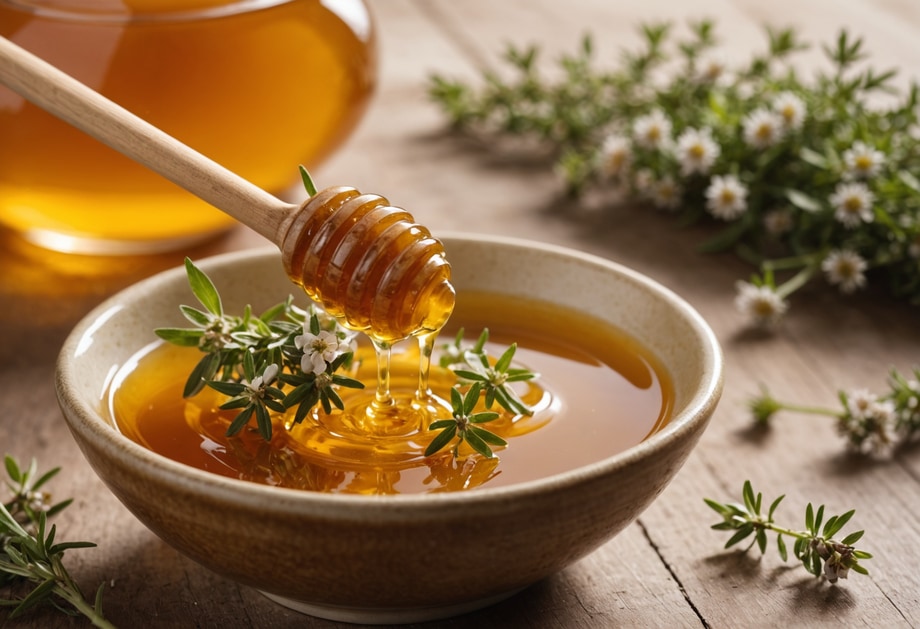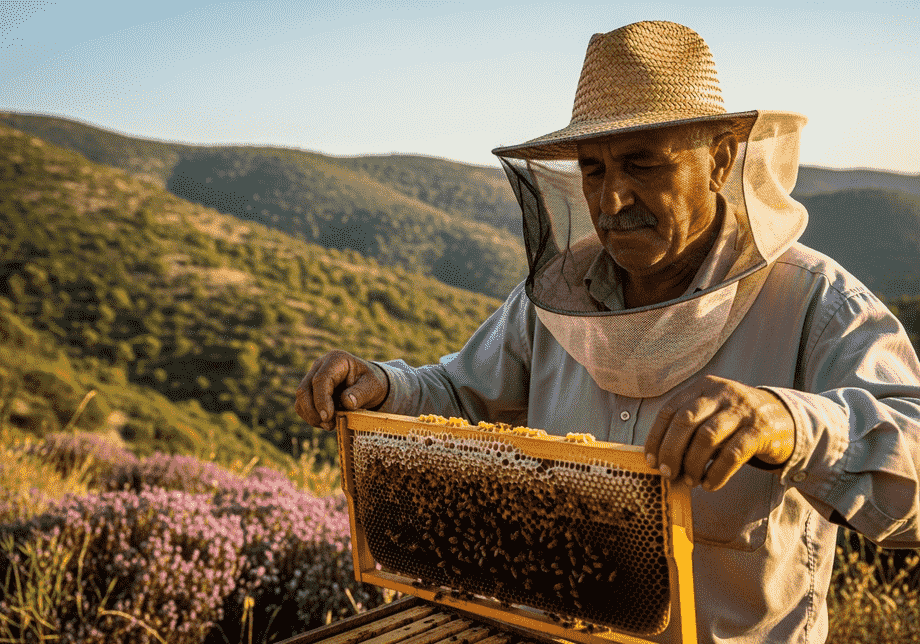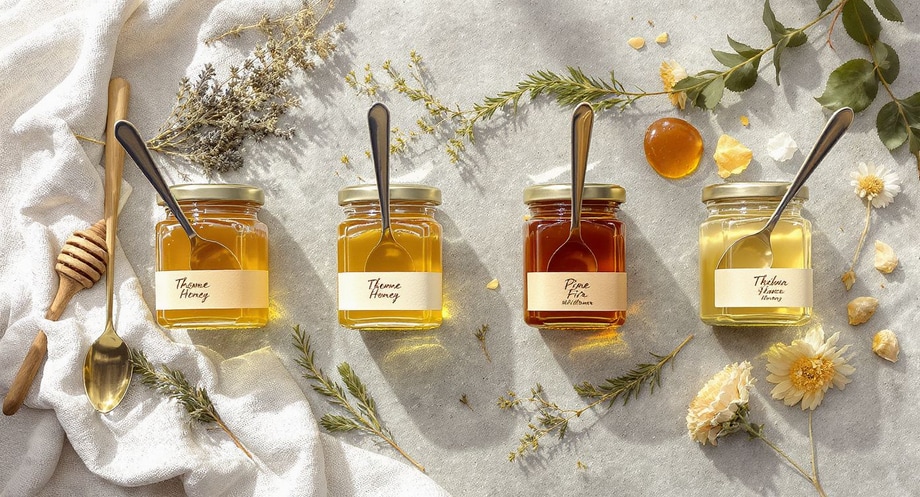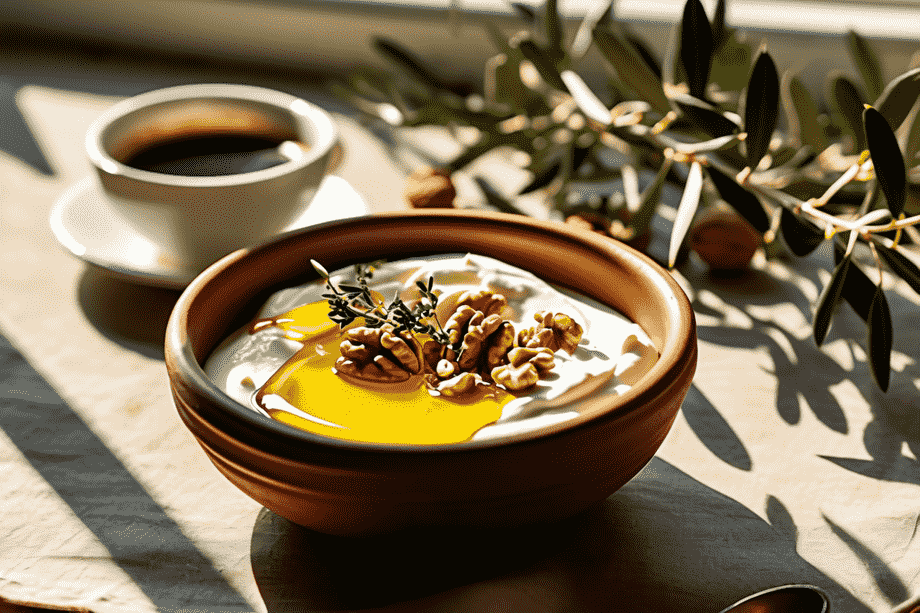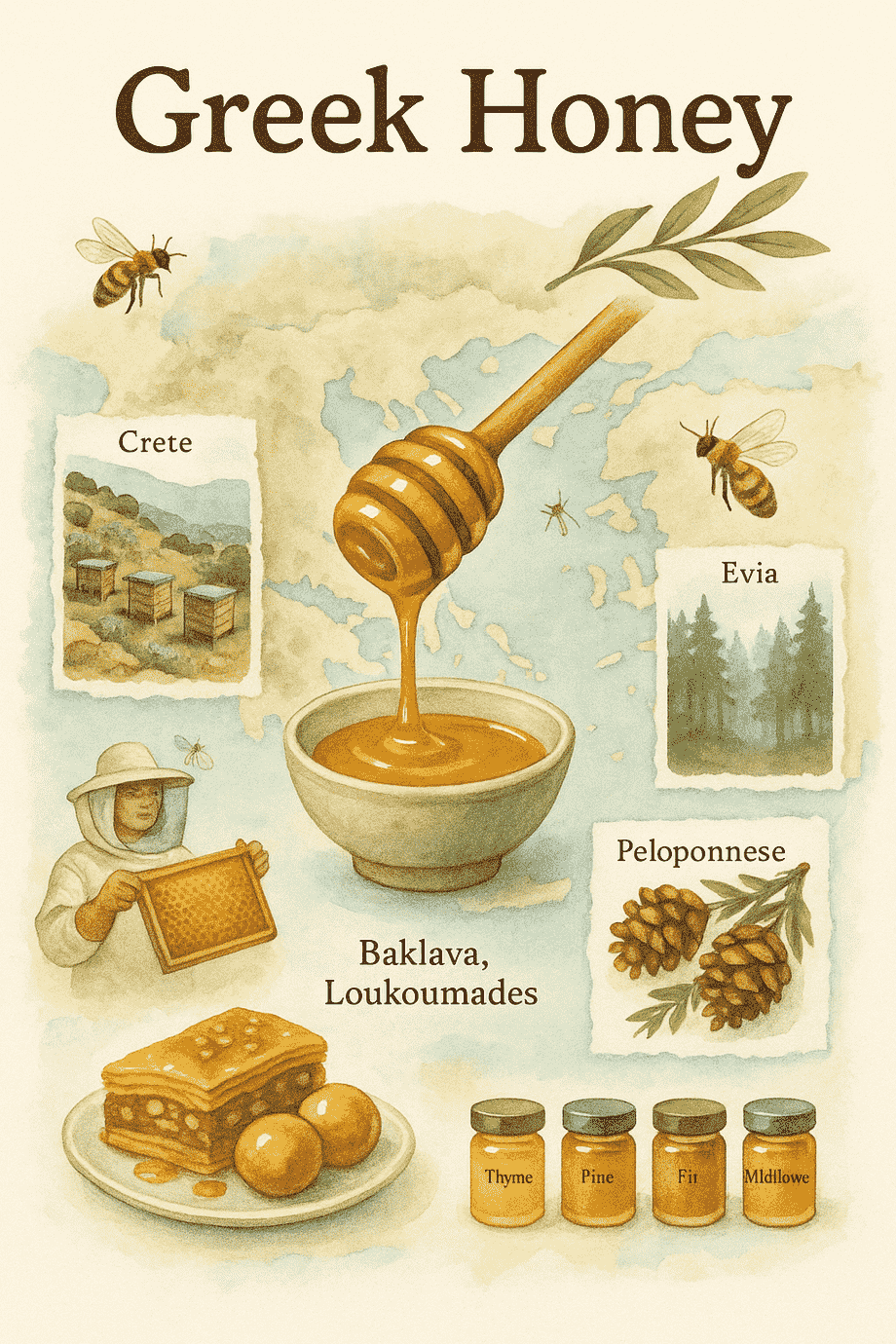Greek Honey Secrets: Taste, Tradition, and Timeless Flavor Unveiled
Imagine a warm afternoon in the hills of Crete, wild thyme blooming in the air, as sunbeams glint off a golden stream of Greek honey. Its sticky, amber glow clings to your spoon, sending up whispers of wildflowers, pine, mountain herbs, and sea breezes. Greek honey brings a taste so pure and layered, you can sense centuries of beekeepers and winding stone paths behind every drop.
This is more than a sweet treat. It’s a bridge to ancient feasts and timeless recipes, woven into village life and honored by poets and cooks alike. With flavors shaped by nature and history, Greek honey stands apart, rich in both taste and tradition. In this post, you’ll uncover how varieties, botanical sources, and the story of the land create a truly unforgettable experience. Along the way, discover how honey winds its way into beloved desserts by exploring this Greek honey desserts list, adding even more depth to every bite.
Ancient Roots: The Historical Legacy of Greek Honey
Step into the world of ancient Greece, where Greek honey was prized as liquid gold. This natural treasure wasn’t just a sweet delicacy; it was woven into daily life, healing rituals, and myths that echo through centuries. The story of Greek honey glimmers with tradition, from hillside hives to marble columns, with each drop bearing traces of centuries past.
Honey in Greek Mythology and Ritual
Honey buzzed at the heart of ancient Greek beliefs. Myths tell how honey was the food of the gods, carried by bees believed to be messengers from Mount Olympus. Poets and priestesses saw honey as a link between mortals and the divine, with offerings poured at temples to honor deities like Artemis and Demeter.
In myth, the infant Zeus was hidden from his father Cronus in a cave on Crete, nourished by sacred bees. Honey was thought to sharpen the mind, spark inspiration, and was a common gift to the gods. These stories gave honey a sense of mystery and sacred power. To learn more about the rich tales and customs tied to honey, explore this resource on honey in mythology and ancient Greece.
Healing, Feasting, and Everyday Life
Ancient Greeks folded honey into nearly every aspect of life. Healers valued it for its ability to heal wounds, fight colds, and soothe throats. Hippocrates and Dioscorides, early Greek healers, wrote about honey’s use in medicine, blending it into salves or teas.
But honey wasn’t reserved only for medicine or ritual. It played a starring role on the ancient table:
- Salted feta and fresh honey crowned morning meals
- Honey sweets and honeyed wine graced weddings and triumphs
- Ovens baked tarts glazed in wild thyme honey
For ordinary families, a honey pot was as trusted as bread and olives.
Ancient Beekeeping Methods
The Greeks learned early to respect and care for their bees. While many cultures harvested wild honeycombs, Greeks became skilled beekeepers, building terracotta and woven hives placed along slopes rich with wildflowers and thyme.
Their practices included:
- Using smoke to calm bees during honey gathering
- Relocating hives to follow seasonal blooms
- Carefully extracting honey without destroying combs
These methods helped maintain strong, healthy colonies, passing rich harvests through generations. For a deeper look into these techniques and their lasting impact, explore how beekeeping was practiced in ancient Greece.
The Enduring Symbolism of Honey Bees
Beyond its sweetness, honey became a symbol of community and renewal. Bees, with their tireless work and harmony, featured on coins, art, and even temple decorations. In ancient stories, they echoed the cycles of life and nature that Greeks cherished.
Curious how the honey bee shaped ancient beliefs and rituals? Find meaningful connections and surprising details in this exploration of the majestic honey bee in ancient Greece.
Greek honey’s story is much more than taste. Its roots run deep, with each golden ribbon carrying a memory of wild mountains, sacred ceremonies, and family tables set beneath olive trees.
Unique Landscapes Shape Distinct Flavors
Greece’s stunning geography does more than inspire postcards and myths—it creates honey with a character all its own. From the jagged peaks of the mainland to the flower speckled fields of the islands, each corner of Greece brings its own tone, taste, and texture to the honey jar.
Mountains, Wildflowers, and Herbs—A Natural Palette
Greek honey begins with a patchwork of raw nature. Step onto a hillside in Crete or a pine forest in Evia, and you’ll sense how climate and terrain combine to influence flavor. The bees feast on a wild feast: thyme that carpets rocky slopes, pine and fir trees topping mountain ridges, chestnut groves, and clusters of wild herbs.
Sunshine is constant, yet winter rains fill rivers and soak the land, letting wildflowers and herbs thrive. Dry summers force flowers, shrubs, and trees to produce powerful essential oils. These get woven into the nectar, layering the honey with intense and vivid tastes.
Here’s how the flavors break down:
- Thyme honey: Clear and golden, with a floral aroma and herbal bite.
- Pine honey: Dark and thick, full of resinous, earthy notes.
- Fir honey: Malty, woodsy, and with a cool, creamy texture.
- Wildflower honey: Changes with the season but usually sweet, bright, and layered with complex floral hints.
Regional Varieties: Taste a Map of Greece
Not all Greek honey tastes the same. Each region is a tiny world, with its soil, plants, and climate shaping what ends up in the jar.
- Crete and the Dodecanese are famous for thyme honey, prized for its floral punch and ability to hold its own drizzled over yogurt or bread. Places like Kalymnos island have thyme covered hills that produce honey as bright and fresh as the Aegean breeze. Explore how thyme honey stands out as a symbol of Greek tradition mentioned in this Greek Honey: A Treasure of Mediterranean Nature.
- Central Greece and the Peloponnese are home to towering pine forests. Pine honey is darker, with a stretch of earthy, almost spicy notes, and a subtly caramelized sweetness that lingers.
- The mountains of the Peloponnese and Evrytania host fir trees that gift a rare, thick honey full of forest flavors. This variety is famous for its deep color and subtle, clean aftertaste.
- Wildflower honey shines in Arcadia, Thessaly, and the small islands. Its complexity is a mosaic, constantly changing depending on which flowers are in bloom.
A closer look at the spectrum:
| Honey Type | Region | Notable Flavor Notes | Color |
|---|---|---|---|
| Thyme | Crete, Dodecanese | Floral, herbaceous, tangy | Light gold |
| Pine | Central Greece, Peloponnese | Rich, woody, caramel | Amber-dark |
| Fir | Peloponnese, Evrytania | Silky, cool, malty | Dark brown |
| Wildflower | Arcadia, Islands | Bright, sweet, floral | Varies |
Climate and Terroir – Why “Where” Matters
The taste of Greek honey is never random. Bees work with what nature gives them each season. Mild winters, long dry spells, and the steady kiss of sunshine mean nectar gets concentrated, and the honey itself becomes thicker and more aromatic. On windswept islands, sea salt lingers in the flowers, lending honey a subtle mineral streak.
In northern Greece, chestnut and oak varieties often appear, bringing darker, almost bitter edged sweetness to the table. Meanwhile, in the southern islands, the sun works like a slow oven, packing energy and aroma into every drop.
If you want to dive even deeper into the different types of Greek honey and their places of origin, you’ll find that each variety tells a story of local weather, plant life, and beekeeping wisdom.
Savoring the Connection
This close bond between land and flavor helps explain why Greek honey stands apart in the world. It isn’t just the bees or the flowers but the harmony of mountains, forests, weather, and centuries of quiet, careful tending by beekeepers who know their land as well as their families.
Let your spoon dip into a jar of Greek honey, and you can taste the fields, feel the slopes, and imagine the sea breezes that shaped its sweetness. For more on how regional blossoms and climates weave their magic into every jar, enjoy this reflection on how Greek honey captures the country’s best flavors.
Greek Honey in Traditional Cuisine
Golden rivers of Greek honey flow through every chapter of village and island life. It brings rich sweetness to breakfast, turns simple pastries into celebrations, and has a skillful way of lifting savory foods with a silky touch. Here, time tested recipes show how Greek honey finds its place right at the heart of the table.
Time-Honored Sweets and Honey-Based Pastries
Greek honey makes classic sweets unforgettable. Picture trays of baklava, with crisp phyllo layered between walnuts and almonds, glazed in a gloss of warm honey syrup. Then there are melomakarona, spiced cookies bathed in fragrant honey, cinnamon, and orange zest— often baked for holidays but loved all year. Loukoumades, airy honey puffs, arrive piping hot at village festivals. Sprinkled with ground walnuts and cinnamon, these treats promise pure joy in every bite.
Each of these desserts shows how honey and tradition go hand in hand. The careful balance of textures and flavors comes straight from centuries of family recipes. If you want more classics for your must-taste list, see this helpful guide to traditional Greek desserts to try.
Many start the morning with thick Greek yogurt crowned by a drizzle of local honey and a scatter of walnuts. Others savor simple pleasures— a slice of crusty bread dunked into the honey jar beside their coffee. When honey meets a still-warm cheese pie or a just-baked sweet roll, breakfast feels warm, inviting, and truly Greek.
Savory Meets Sweet: Cheese Pies and Honey
While Greek honey glows in desserts, it works wonders with savory foods too. Imagine biting into a flaky cheese pie salty cheese melts inside golden pastry. A spoonful of raw Greek honey is poured over the top just before serving. The rich, salty filling and crisp edges are met by a wave of sweetness. It’s a match that surprises and delights every time.
On the island of Crete, sarikopites are a local favorite. Thin pastry wraps around herby mizithra cheese, then each pie is fried and finished with a glossy drizzle of honey. The result is a dance of textures, where sweet and savory flavors bounce off each other and linger. If you want to create or understand this dish better, check out its sarikopites recipe and origins, where you’ll find steps and the story behind the pie.
Greek honey also finds its way into roasted meats, earthy salads, and grilled halloumi. A light brush over lamb or chicken gives an aromatic caramel crust, while a spoon in vinaigrettes brings out the herbal tones of olive oils and mountain greens. In every bite, the depth of Greek honey comes through: sweet, earthy, and layered with wild flavors born from the land.
From Hive to Jar: The Art of Beekeeping in Greece
Greek honey carries not just the taste of a wildflower filled hillside, but centuries of careful beekeeping. Bees hum across thyme, pine, and heather, while beekeepers, old and young, move with the patience and timing learned from nature itself. Modern Greek beekeeping stays rooted in the rhythms of sun, wind, and blossom, blending ancient respect for land with smart new techniques. Every jar found in a village shop or street market starts with this patient dance between bee, keeper, and season.
Traditional Craft Meets Present-Day Wisdom
In Greece, beekeeping is still partly an art passed down through families. Many beekeepers carry on the work their parents and grandparents started, learning to read the weather, wildflowers, and the moods of their hives. In mountain villages or island outposts, you’ll still see the old woven or clay hives, simple but effective, echoing the past.
Traditional Greek beekeeping values:
- Respecting the bloom: Harvesting only when flowers are heavy with nectar means better quality honey and happy, healthy colonies.
- Minimal interference: Careful, gentle collecting keeps bees strong, so hives return year after year.
- Harmony with the wild: Moving hives seasonally, known as nomadic beekeeping, follows nature’s cues and avoids over-harvesting any one area. This preserves both landscape and bee population.
If you want a glimpse into how nomadic beekeeping protects both tradition and nature, explore this feature on the timeless art of nomadic beekeeping in Greece.
Seasonality and Nature’s Rhythm
Greek beekeepers almost act as guides, helping bees move with the seasons. When spring’s blossoms open, hives are ready to collect thyme and wildflower nectar. Come autumn, some beekeepers shift their hives to pine forests. This gentle migration means bees always have a fresh source of food and the honey reflects the changing face of the countryside.
Harvesting honey in Greece is about patience. Beekeepers watch the weather, test the honey’s thickness, and wait for the moment when flavor peaks. Hastiness spoils quality, so the motto is: Nature leads, people follow.
Tradition and Sustainability Go Side by Side
Modern tools have helped, but the spirit of Greek beekeeping has not changed. Most beekeepers practice on a small scale, choosing local, sustainable methods over quick profit. They use wooden frame hives simple yet effective—and avoid harmful chemicals.
Here’s how they combine tradition with a care for the land:
- Limit harvests to protect bees and preserve local flowers
- Let a portion of honey remain so bees survive winter
- Encourage pollination of nearby crops and wild plants, helping local farmers as well
- Support biodiversity by maintaining wildflowers and forests instead of replacing them with single crops
This close link between person and place means Greek honey always tastes of its origin and respects both the bee and the ecosystem. For more on how modern and traditional techniques blend, see this overview of the history and production of Greek honey.
Local Knowledge Shines in Every Drop
Every Greek beekeeper will have stories about sudden rainfalls, unexpected flowerings, or adapting to drought. They pay close attention to the land, knowing which slopes catch the sun and where the richest blossoms grow. This deep, local knowledge gives each batch of honey its own unique sweetness, color, and texture.
If you want to see how these old ways shape perfect honey, visit this story about Greece’s secret to perfect honey, where you’ll find a firsthand account from a Greek beekeeper who balances tradition, nature, and the art of the craft.
Selecting, Tasting, and Pairing Greek Honey
When you first open a jar of Greek honey, you notice more than sweetness. The scent brings wild thyme, shaded pine, and hints of the sea. Greek honey tells a story of region and season, and every spoonful can taste like a small escape. Exploring how to select, taste, and pair this treasured honey makes each bite twice as satisfying. Savoring Greek honey is a simple pleasure that invites curiosity let’s uncover how to make the most of it at home.
How to Spot Authentic Greek Honey
Not all honey labeled “Greek” is the real thing. Authentic Greek honey has a few telltale signs:
- Origin on the label: Look for specific regions or islands, like Crete, Evia, or the Peloponnese.
- Crystallization: Real honey can set and become creamy or grainy over time. That’s a good sign, not a flaw.
- Color and aroma: Expect a range, from light gold (thyme honey) to deep brown (fir or pine). The smell should remind you of wildflowers or woody herbs, not just pure sweetness.
- Minimal ingredients: Pure Greek honey lists nothing but honey itself, no water, corn syrup, or additives.
When shopping, trust your nose and eyes. If you can, buy from Greek markets, trusted importers, or local producers. True Greek honey often comes in simple jars, sometimes with handwritten labels or rustic packaging that hints at its village origins.
Tasting Notes: Experience the Major Varieties
Take a spoon and slow down. Sampling Greek honey is like tasting wine let it sit on your tongue, find the scents, and notice how flavors build.
Here’s what to expect from the most beloved kinds:
- Thyme Honey: Clear gold with a shine, floral on the nose, lightly herbal, and tangy, finishing with fresh hay and wild mountain notes.
- Pine Honey: Dense, almost syrupy, with deep amber color; earthy, woody, and barely sweet, sometimes carrying flavors of caramel or resin.
- Fir Honey: Cool, silky, and less sweet; gentle malt and tree bark notes give way to a faint minty finish.
- Wildflower Honey: The most varied of all, changing with each batch; usually bright, slightly fruity, and lush with subtle complexity from dozens of blooming plants.
To discover the fuller experience of Greek honey’s rich flavors and tradition, this guide to Greek honey’s taste and tradition adds detailed profiles and even more pairing ideas.
You can try a simple vertical tasting at home. Spoon a bit of each onto a plate (or crisp slice of bread) and see which move you maybe the burst of thyme, or the dark depth of pine. Let friends and family join for a true tasting adventure.
Perfect Pairings: Greek Honey Meets Food and Drink
Pairing Greek honey is about play. Each honey brings out new flavors in everyday foods, sometimes shining, sometimes playing backup. Here are easy yet inspired ways to enjoy Greek honey at its best:
- With Cheese: Drizzle thyme honey over tangy feta or creamy soft cheeses. Fir and pine honey give aged cheeses like graviera or manchego a beautiful contrast.
- Breakfast Boost: Swirl wildflower honey into Greek yogurt, over oatmeal, or on fresh fruit. Try it with walnuts for a classic touch.
- Savory Surprises: Brush pine or fir honey on grilled halloumi or roast lamb for a caramelized, herbal finish.
- Baked Bliss: Use honey as a sweetener for breads, muffins, or nut-studded cakes. Its floral tones lift basic batters to a new level.
- Drink Pairings: Stir honey into black or herbal tea, or serve a cheese board with glasses of dry white wine or sweet vin santo.
Pairing can be as simple as adding a spoonful to a salad dressing or using it as a glaze for carrots or sweet potatoes. And don’t forget ice cream, a drizzle of thyme honey over vanilla brings a fresh, Mediterranean note to even the most ordinary dessert.
Savor and Experiment at Home
Choosing, tasting, and pairing Greek honey is not about strict rules. It’s about letting curiosity guide you. Start small: use a new jar with your breakfast, add a drizzle to cheese, or try tasting side-by-side to find which variety speaks to you. There’s no wrong way; only new delights to discover as you make Greek honey part of your kitchen story.
Conclusion
Greek honey is not just a sweetener; it is an invitation to experience the spirit of Greece in every drop. Each spoonful captures wild thyme, sun warmed pine, and generations of care that shape the land’s flavor and its traditions.
Bringing Greek honey into your kitchen connects you to simple breakfasts under olive trees, lively village kitchens, and the timeless rituals of island life. Let its gold warmth brighten your table and spark new memories, just as it has for centuries across Greece’s hills and coastlines.
Thank you for joining this journey into the world of Greek honey. If you hunger to explore more authentic flavors and stories from Greece’s heart, discover the possibilities with traditional Greek recipes that highlight ingredients just as storied as Greek honey itself.



